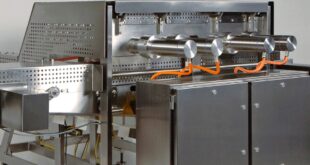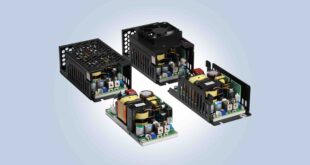Recent popular pushes to reduce plastic use have dramatically cut disposable plastic bag use, and the plastic straw is seemingly next on the chopping block. No doubt this is a positive change, and the amount of plastics in our oceans is quite appalling, but an important fact to note is that almost half of it is made up by fishing nets alone. Amanda Salazar del Campo reports
Recently, statistics have indicated that the maritime environment is polluted by a certain type of plastic product: fishing nets.
More than 46% of the waste in maritime litter is represented by fishing nets.
This is suggested to be due to bad waste management including recovery, sorting and disposal, producing a delay on the relief of the maritime environment.
Consequently, inclusiveness of all the involved stakeholders is required to improve the process of waste manipulation.
Nowadays, efforts have been made to reconsider what for many years has been called ‘waste’ – something that does not have any further function – as a ‘raw material’.
Plastix A/S contributes to this purpose by recovering fishing gear and improves the material properties to allow the fishing gear to become an option to produce new products.
The interesting issue is, how can the material be modified to be suitable for re-introduction to the manufacturing process?
Which modifications need to be made in order to make the recycled material perform like a virgin material?
Initial steps for pioneering the recovery of fishing nets
Fishing nets recovered by Plastix are mainly made from high density polyethylene (HDPE). Its high-density is a consequence of the molecular arrangement of the polymer chains as well as its molecular weight.
Due to the linearity of the molecule chains, it is easy for the polymer to arrange neatly and produce a well-arranged microstructure.
As a consequence, the polymer has better mechanical properties compared to other commercial thermoplastics, as there is a greater cohesive strength between the close-packed molecules, making HDPE ideal for the fabrication of fishing nets.
To produce fishing nets, the polymer goes through a cold-drawing process in which the polymer is stretched, forcing the chains to re-arrange.
HDPE consists of two phases, the crystal phase (ordered chains) and the amorphous phase (disordered chains).
While drawing, the crystals within the polymer are broken and forced to slip past each other, liberating the amorphous phase and allowing the polymer chains to disentangle, increasing the order of the system.
Apart from this, modification of the orientation of the chains parallel to the draw direction also occurs – a process known as strain hardening. The result is a highly ordered polymer with a high amount of interaction between the chains, increasing the forces that keep the polymer packed together.
For the fishing market, this microstructural order is desired as it increases the strength of the polymer.
However, this same order complicates the recycling of the fishing nets. The highly ordered chains restrict the chain mobility and consequently increase the viscosity of the polymer, making it difficult to re-process.
The purpose is then to use mechanical blending as the mechanism that disturbs the order of the chains to reduce the viscosity of the recycled HDPE. It is expected that the processability of the material will improve if it is compounded with a lower viscosity HDPE polymer.
On the other hand, the convenient mechanical properties of the recovered material would ideally be preserved, therefore different requirements must be considered when performing the compounding.
Resultant behaviour of the compounded blend
Polymer blends can be either miscible or immiscible. The properties are affected depending on the nature of the blend.
The hypothesis is that by blending, the final product will show additive properties regarding viscosity, an improvement over the initial recycled polymer.
If the blend is not miscible, this does not mean it is not compatible.
Miscibility is a measure of mixing at the molecular level. An immiscible blend can still be compatible if it still shows good macroscopic physical properties, which arise from strong interactions between the component polymers. These concepts are far easier to consider when the correct classification is given for the materials in question.
The results of compounding recycled fishing nets with virgin HDPE showed that another important variable is the blend ratio, as this further determines the properties of the material. The best overall results are 50/50.
The strength of the recycled material is maintained and the processability conditions are improved.
Nevertheless, these results were obtained at selective compounding conditions and without any additives.
The next steps are to carry out the same process under different conditions, in order to create a robust database of blends and their properties.
It is important to consider that when designing a product, it must exhibit a desired performance at a specific cost. The material and the manufacturing technique, as well as sustainability issues and the post-consumer life, must be considered. Fishing nets make an attractive possibility as a resource of HDPE for the industry.
To achieve that, the development of responsible material handling will simplify this complex question for material engineers. When the material is well understood, from manufacture, throughout its life, and its disposal, the option of predicting its behaviour when recycled becomes easier.
Nevertheless, the continuous research of polymer molecular dynamics opens the door for the understanding of the performance limits of polymers, and ways to recover them to become part of a cycle instead of a linear chain of consumption.
Amanda Salazar del Campo is writing as a guest author on behalf of materials encyclopaedia Matmatch.
 Engineer News Network The ultimate online news and information resource for today’s engineer
Engineer News Network The ultimate online news and information resource for today’s engineer





